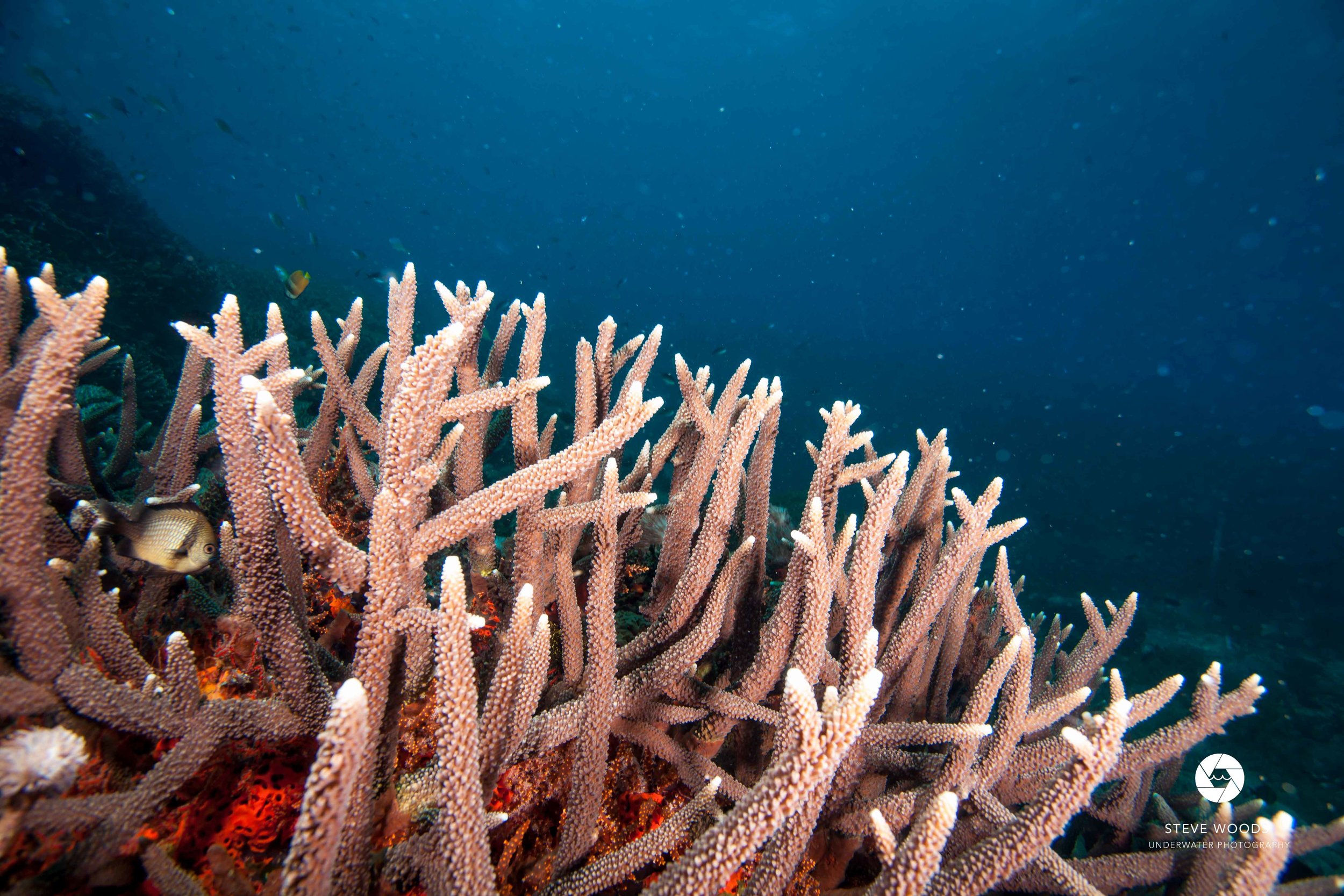Branching Acropora coral
Acropora
This genus of coral is one of the easiest to identify and most abundant in the shallow areas of reef. Look for a large axial polyp at the end of each branch with smaller radial polyps covering the branches. This coral genus is most commonly seen in branching and table-like growth forms. It often creates large thickets home to thousands of damselfish. While diving around Nusa Penida look for the rare Acropora parahemprichii recognized by its stubby pink branches and blue mouth on the axial polyp.
Folliose Echinophyllia coral
Echinophyllia
This beautiful folliose hard coral can be found covering large areas of the reef crest and upper reef slope along the northern shoreline of Nusa Penida. It is a favourite snack for the Hawksbill turtles in the area as they break into the coral crevasses to feed on the rich growth of sponges and hydroids found within colony bases.
Submassive Pocillopora coral
Pocillopora
Another common coral genus in the reef shallows, this relatively small shrub-like coral has nobby branches and is able to grow in a wide range of conditions. It’s an exciting coral for anyone involved in coral restoration projects as it is often one of the first types of coral to naturally settle upon new substrate. Look for small pocillopora colonies starting to grow in degraded rubble areas of reef and old table coral skeletons.
Massive Porites coral
Porites
Slow and steady wins the race! That is the evolutionary strategy of this slow growing coral. Although these colonies of tiny polyps grow at extremely slow rates they can often withstand big storms and bleaching events. Cores into the skeletons of these massive corals can be aged using annual growth rings (just like trees!) and used to track long term changes in ocean temperature. Around Nusa Penida there are some awe-inspiring giant porites colonies - see if you can guess their age (they grow an average of 3mm /year).
Xenia Soft Coral
Xenia
This Soft Coral blankets areas of reef flowing in the current with its 8 feathery tentacles pulsating as it collects food particles in the passing water. In addition to being beautiful it also holds a vital role in reef areas which are naturally recovering from disturbances. You will see this coral growing at the edge of rubble areas or upon broken coral. Over time the Xenia will cover the area and help stabilize the substrate.





